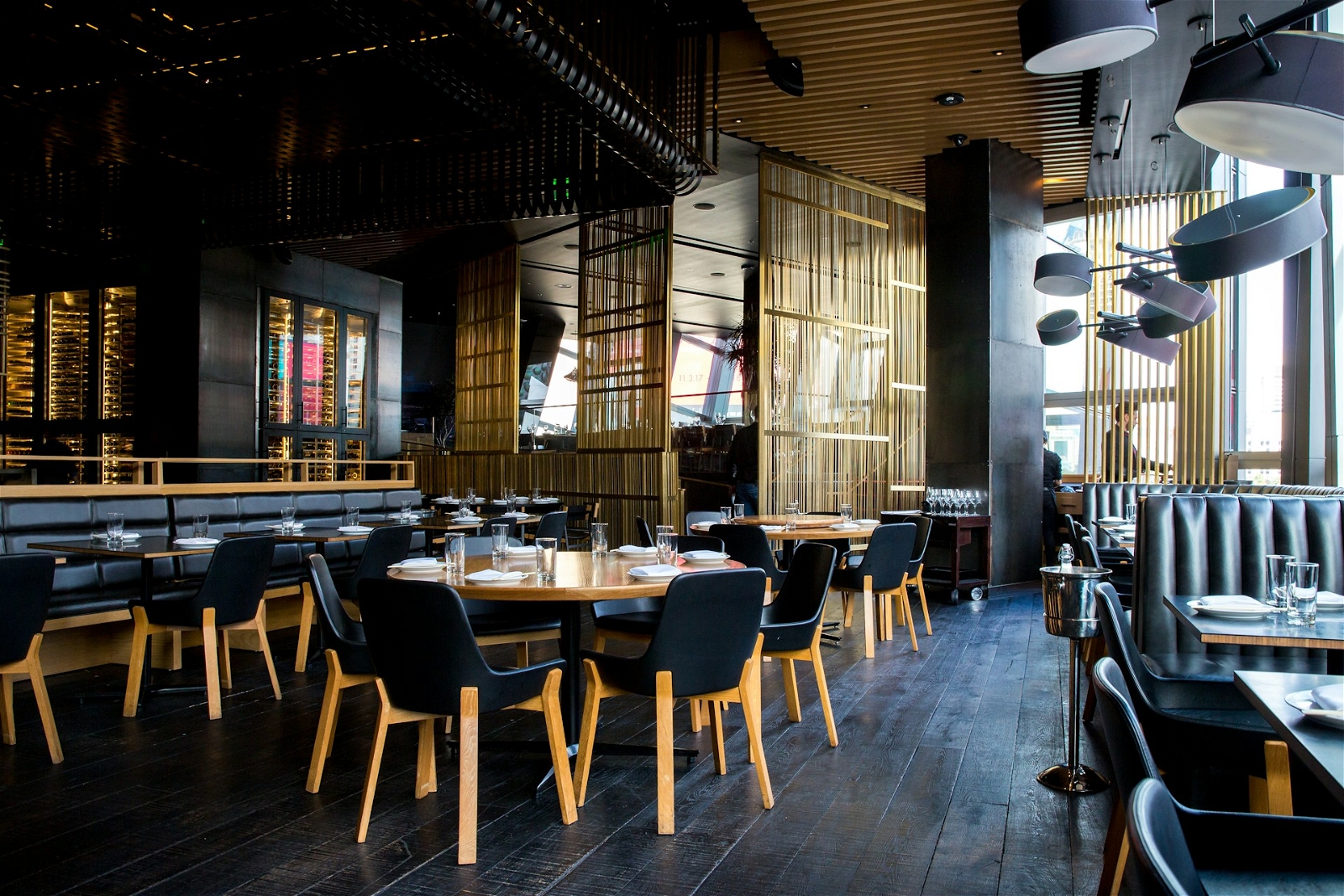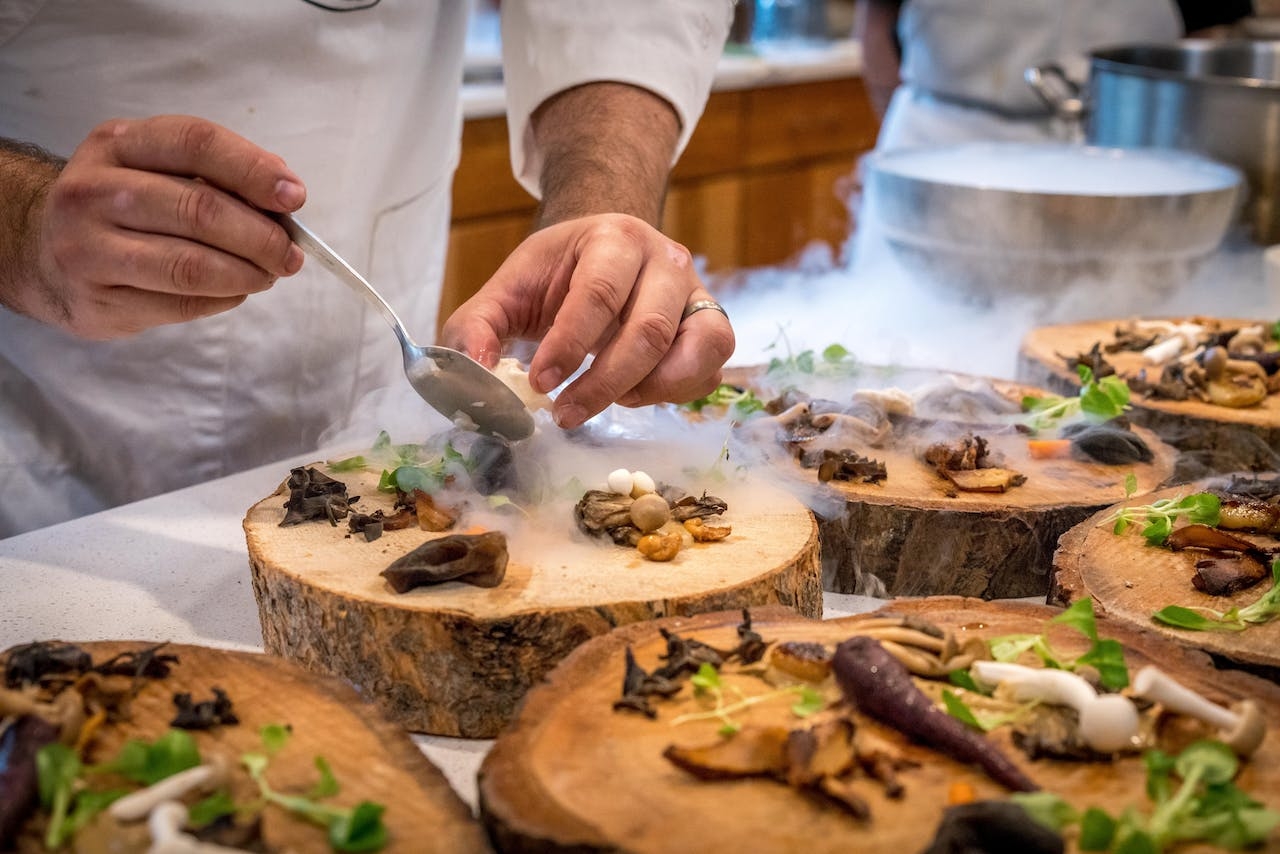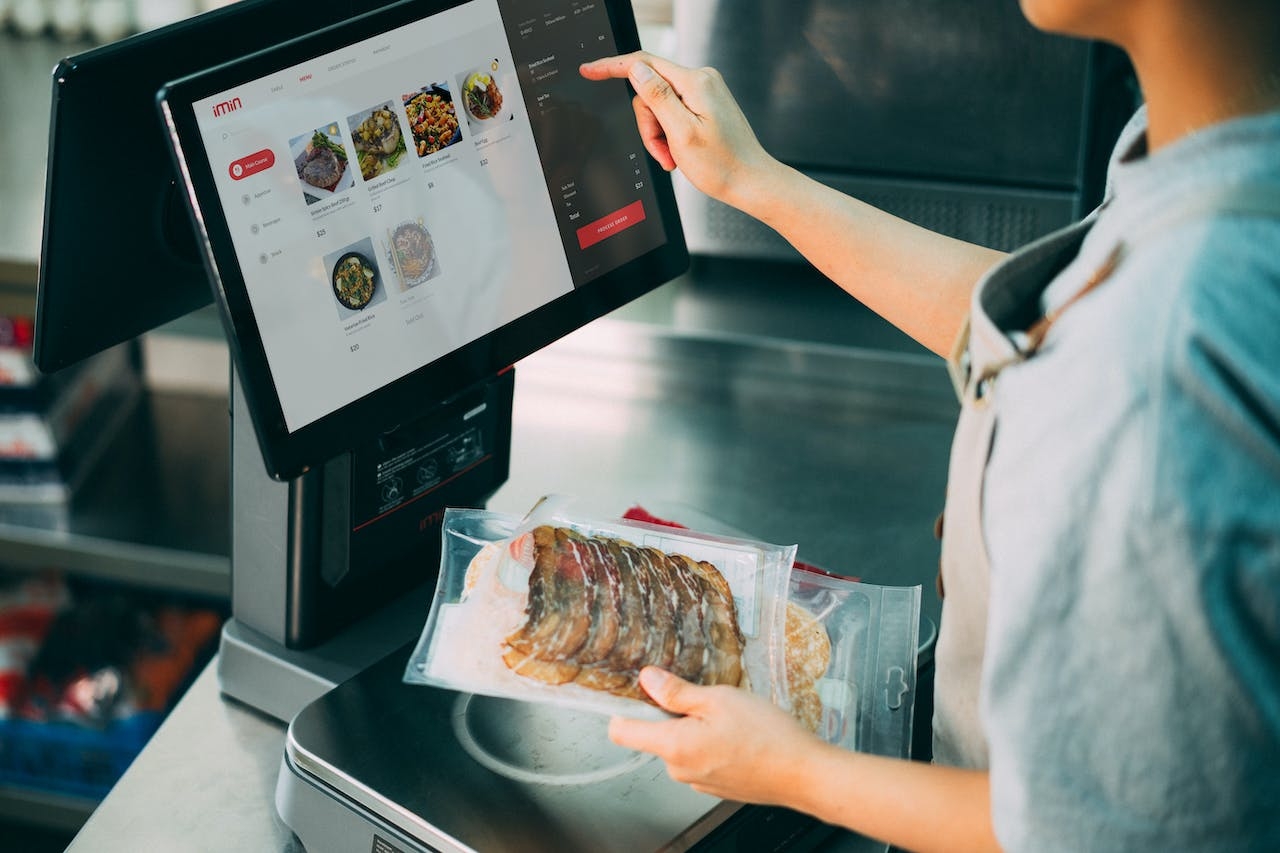Maximizing Your Restaurant Profit Margin: Essential Strategies for Success
By Morten Numrich · 31. January 2024
If you own a restaurant or plan to, you know that maintaining a healthy profit margin is crucial for success🚀.
But what exactly is a ‘restaurant profit margin’, how do you calculate it, and more importantly, how can you improve it?
This article cuts straight to the essentials, exploring both net and gross profit margins, and offering concise strategies for enhancing your restaurant’s financial health.
Expect practical insights into cost control, pricing, and operational efficiency, all designed to boost your bottom line.
Key Takeaways
- The restaurant business is about flair and finances; knowing your net profit margin and gross profit margin is key—think of them as the entree and appetizer of your financial feast respectively.
- The ideal restaurant keeps its profit margins plump with precise pricing, cost control, and putting operations on a diet to streamline for efficiency.
- Spicing up your revenue involves crafting happy-hour hookups, expanding your gourmet portfolio to include catering and events, and stirring in a loyalty program to keep diners coming back for seconds.
Decoding Restaurant Profit Margins
 pop up restaurant
pop up restaurant
Understanding profit margins is like having a backstage pass to your restaurant’s financial performance.
It’s the compass that guides your pricing strategies, cost management, and overall business strategy.
Not to mention, it’s the ticket to increasing that all-important restaurant revenue.
Now, when we talk about profit margins, we’re actually serving up two different dishes: net profit margin and gross profit margin.
Think of gross profit margin as your appetizer, focusing solely on revenue and the cost of goods sold.
It’s a snapshot of your restaurant’s efficiency on a dish-by-dish basis. Net profit margin, on the other hand, is your main course.
It considers all expenses and tells you how much of each dollar earned is pure profit.
We’re now ready to delve into these two critical components of your restaurant’s profit equation.
Understanding Net Profit Margin
Net profit📈 margin, the pièce de résistance of your financials, takes into account all your expenses, not just the cost of goods sold.
It’s like your restaurant’s report card, showing how much you’re really earning after all expenses are covered.
In the restaurant industry, the average profit margin is typically around 3-5%, which is also the average net profit margin.
Calculating net profit margin, while not as delightful as tasting a fine wine, is quite straightforward.
To calculate profit margin, you simply divide your net income by your gross sales and multiply the result by 100.
A close eye on this number can help you trim costs and boost revenue, ensuring your restaurant thrives in the fast-paced dining scene.
Grasping Gross Profit Margin
Moving on to the appetizer of our profit margin meal, the gross profit margin.
This number reflects the cost of goods sold (COGS) – the direct costs of producing the dishes that your restaurant serves.
It’s like a spotlight on your restaurant’s day-to-day operations, showing how efficiently you’re turning ingredients into income.
To calculate your gross profit margin, follow these steps:
- Subtract the cost of food and beverage sales from the revenue they generate.
- When it comes to gross profit margin, a healthy figure hovers around 70%.
- If you’re hitting these numbers, it’s a sign that your restaurant is effectively managing costs and pricing.
The Nitty-Gritty of Average Restaurant Profit Margin
 restaurant chefs
restaurant chefs
With our understanding of profit margins cooked to perfection, let’s move on to the main course – the average restaurant profit margin.
In the United States, restaurants typically see profit margins between 3% and 5%.
But why are these figures seemingly low? Well, picture this: a bustling kitchen, fresh ingredients being prepped, and a full house in the dining area.
Behind this vibrant scene are all the costs, including food costs, labor, and overhead expenses.
These costs take a big bite out of the total revenue, leaving restaurants with slim profit margins.
Key Factors Influencing Your Restaurant’s Profit Margins
Having examined the average restaurant profit margin, it’s time to investigate the factors that can enhance it.
From the type of ownership, size of the establishment, to the category of the restaurant, several ingredients can stir the pot of your profit margins.
The size and type of your restaurant can serve up significant differences in profit margins.
For instance, a cozy café or a bustling catering company can potentially rake in more profits than an average-sized restaurant.
In the restaurant business, the model also plays a role in carving the profit slice.
Restaurant owners who operate as a sole proprietor or a small partnership might enjoy more dough compared to restaurants owned by big corporations or franchises.
Another key ingredient in the recipe for profitability is operational efficiency.
Streamlining operations, reducing energy costs, and optimizing pricing can all help to beef up your net profit margins.
By effectively managing operating expenses, it’s like having a well-oiled kitchen machine that not only prepares delicious dishes but also serves up a healthy profit.
Strategies to Elevate Your Restaurant Profit Margin
 food
food
Equipped with the elements of success, we should devise a strategy to enhance your restaurant’s profit margin.
Our recipe includes three key elements: precise pricing, cost control, and streamlined operations.
Pricing with precision is like the salt in our profitability dish – a small ingredient with a big impact.
It’s all about analyzing those net profit margins and tweaking prices to ensure you’re not just covering costs, but also raking in the dough.
Cost control, on the other hand, is like the main ingredient of our dish.
From tracking and managing inventory to optimizing staffing and embracing digital solutions, there’s quite a bit of chopping, stirring, and simmering involved.
Finally, streamlining operations is the secret sauce that brings everything together.
The right tech can make orders more accurate, cut down wait times, and give you a tight grip on your inventory.
It’s all about making your restaurant run smoother, leading to lower costs and, ultimately, fatter profit💰 margins.
Pricing with Precision
When it comes to pricing, it’s not just about covering costs and making a profit.
It’s about understanding your customers, what they value, and how much they’re willing to pay.
This is where the art and science of pricing come in, carefully balancing costs, profit margins, and perceived value to set prices that not only cover costs but also drive sales.
Strategically placing high-profit items next to less profitable, expensive ones can guide customers’ buying decisions, making your high-margin items hard to miss.
And remember, variety is the spice of life. Offering a range of price points can cater to a wider customer base, increasing the chances of driving sales and boosting profits.
Cost Control Tactics
Cost control is the main ingredient in the recipe for restaurant profitability.
It’s all about managing your costs while maintaining the quality and creativity that make your restaurant unique.
From negotiating with suppliers to reducing waste and managing labor costs effectively, there are several ways to keep your finances in check.
One of the most effective ways to control costs is by managing your inventory efficiently.
From knowing exactly what you have in stock to predicting future needs, an efficient inventory management system can help cut costs, reduce waste, and make your restaurant more profitable.
Streamlining Operations for Efficiency
Streamlining operations is like the garnish on our profit margin dish – it ties everything together and elevates the overall experience.
From leveraging technology for reservations and table turnover to optimizing inventory management, every effort to improve efficiency can contribute to your bottom line.
Streamlining isn’t just about cutting costs – it’s also about enhancing the customer experience.
When your restaurant runs smoothly, customers are more likely to enjoy their experience and come back for more.
And with repeat customers spending up to 67% more than new customers, this can have a significant impact on your profits.
Revenue-Boosting Tips for the Savvy Restaurant Owner
 restaurant
restaurant
Armed with a comprehensive understanding of profit margins and effective strategies, we can introduce some revenue-enhancing tips for the astute restaurant owner.
From crafting irresistible promotions📣 to expanding offerings and leveraging loyalty programs, there are plenty of ways to sweeten your revenue pot.
Promotions, like a well-crafted happy hour, or limited-time offers, can attract customers during slow periods and encourage repeat visits.
Expanding offerings, whether through catering services or private events, can also help drive sales and increase revenue.
And don’t forget loyalty programs – rewarding regular customers can encourage repeat business and potentially increase sales by up to 30%.
Crafting Irresistible Promotions
To craft irresistible promotions, you need to understand your clientele and their preferences.
A well-designed happy hour, for instance, can attract a crowd during typically slow periods, boosting sales and creating a buzz around your restaurant.
Limited-time offers (LTOs) can also be a powerful tool to drive sales.
By creating a sense of urgency and exclusivity, LTOs can entice customers to try something new and increase their overall spending.
Successful examples of LTOs include seasonal offerings from Starbucks and Krispy Kreme, and targeted promotions from Pizza Hut.
Expanding Offerings to Drive Sales
Expanding your restaurant’s offerings can be a game-changer for boosting revenue.
Consider venturing into catering services or hosting private events.
These initiatives can bring in additional revenue during off-peak hours and provide a unique dining experience that sets your restaurant apart.
In the digital age, expanding your offerings can also mean embracing online ordering and delivery services.
Partnering with third-party delivery apps can widen your reach and cater to the growing demand for convenience and variety.
It’s all about meeting customer demand where they are and providing a variety of options for them to enjoy your food. Some popular third-party delivery apps include:
- Uber Eats
- DoorDash
- Grubhub
- Postmates
By partnering with these apps, you can reach a larger customer base and offer your food to a wider audience.
Leveraging Loyalty Programs
Loyalty programs are like the cherry on top of your revenue sundae.
By rewarding regular customers, you encourage repeat business, creating a loyal customer base that contributes to steady revenue.
Implementing a loyalty program doesn’t have to be complicated. It can be as simple as a punch card system or as sophisticated as a mobile app.
Some successful examples of restaurant loyalty programs include Hut Rewards from Pizza Hut and MyWay Rewards from Subway.
These programs keep customers coming back, increasing the chances of higher sales and profits.
Analyzing and Adjusting: The Path to a Profitable Restaurant
 restaurant payment system
restaurant payment system
After integrating these strategies into your restaurant operations, the next step is to evaluate the results.
The path to a profitable restaurant involves not just implementing strategies, but also analyzing their impact and making necessary adjustments.
This iterative process is like refining a recipe – it takes time, patience, and a willingness to learn from both successes and failures.
One key area to analyze and adjust is your menu.
This involves a process known as menu engineering, where you analyze the profitability and popularity of your menu items and adjust your menu design accordingly.
By highlighting your most profitable dishes and redesigning your menu to guide customers towards these items, you can significantly increase your profits.
In addition to your menu, consider analyzing and adjusting your use of technology.
Whether you’re using a POS system to streamline transactions and provide sales insights, or an inventory management system to reduce waste and optimize purchasing, technology can play a key role in enhancing your restaurant’s profitability.
Menu Engineering Mastery
Menu engineering is like the secret ingredient in your profitability recipe.
By analyzing the profitability and popularity of each menu item, you can make informed decisions about what to include on your menu and how to price each item.
This involves not only understanding the cost of each dish but also how much customers are willing to pay for it.
Strategically placing high-profit items on your menu can guide your customers’ buying decisions, making your high-margin items impossible to miss. And remember, portion control is key.
By controlling portion sizes, you can manage your costs more effectively and ensure that your pricing reflects the value you provide.
Adopting Tech Solutions
In the fast-paced world of the restaurant industry, technology can be your secret weapon.
From POS systems that streamline transactions and provide valuable sales insights, to inventory management software that helps you reduce waste and optimize purchasing, technology can play a vital role in boosting your restaurant’s profitability.
When it comes to choosing tech solutions, consider your restaurant’s specific needs.
For instance, a POS system like Square or Clover could be ideal for a fast-paced restaurant, while a more robust inventory management system like Revel Systems or UpServe might be more suitable for a larger establishment with a wide variety of inventory items.
The Financial Framework for a Profitable Restaurant
A robust financial framework serves as the backbone of your restaurant, similar to the kitchen where all the magic unfolds.
From income forecasting and cash flow management to budgeting and bookkeeping, a well-structured financial framework can provide the stability and clarity needed to make informed business decisions.
Having a clear financial picture can also help you identify opportunities for cost savings and revenue growth.
Whether it’s cutting down on food waste🚯, optimizing staffing levels, or finding new ways to attract customers, understanding your financials can provide valuable insights for improving profitability.
Summary
To sum it up, running a profitable restaurant is a lot like cooking a gourmet meal.
It requires a deep understanding of your ingredients (profit margins), a well-thought-out recipe (strategic planning), and a willingness to taste and adjust along the way.
By implementing the strategies discussed here and continuously monitoring and adjusting your operations, you can transform your restaurant into a profitable and sustainable business that satisfies both your customers and your bottom line.
Frequently Asked Questions
What is a normal profit margin for a restaurant?
A normal profit margin for a restaurant is typically around 3-5%. This is considered the average net profit margin for restaurants.
What is the profit margin for restaurants in the UK?
The average profit margin for restaurants in the UK is between 3-5%, with total takings averaging between £100,000 and £250,000 each year.
So, don’t expect pots of gold, but there’s definitely some silver lining.
What is the profit margin for the food industry?
The profit margin for the food industry ranges between 20-30%, which is worth considering for anyone hungry for success in this business.
So, keep an eye on the costs because they can make a meal out of your profits.
What food has the highest profit margin?
Burgers, pizza, wings, tacos, and small bites offer high profit margins, making them the most profitable food items for your business.
Honey production, coffee shops, popcorn, custom cakes, chicken poultry, pizza, and fruit juice also have good profit margins for food businesses.
What is the difference between net profit margin and gross profit margin?
Net profit margin accounts for all expenses, while gross profit margin only considers revenue and cost of goods sold. So, the main difference lies in the inclusion of all expenses.

